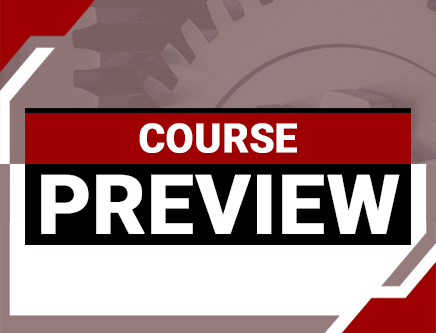Direct Current Fundamentals for Non-Electrical Engineers
In Direct Current Fundamentals for Non-Electrical Engineers, you'll learn ...
- How to find voltage, current and resistance in series and parallel circuits
- Why conventional flow notation is easier for non-electrical engineers to understand
- How to analyze a circuit using the principles of Kirchhoff’s Laws
- How bridge circuits are used for component measurement and sensor signal conditioning
Overview
Direct current (DC) is a continuous electric current that flows in one direction only, without substantial variation in magnitude. DC is commonly found in many extra-low voltage applications and some low-voltage applications, especially where these are powered by batteries or solar power systems, which can produce only DC. Most electronic circuits require a DC power supply.
Direct current is not used for long-distance power transmission because it is difficult to step up the voltage to a level that is efficient for energy transfer and then to step the voltage back down again for safe domestic use. It is possible with alternating current (AC) to build electric generators, motors and power distribution systems that are far more efficient than DC, and so we find AC used predominately across the world in high power applications.
In this course, you’ll learn about the concepts of voltage, current, resistance, capacitance and inductance and you’ll learn how to analyze both series and parallel DC circuits. The course uses pictorial representations and fluid flow analogies to help non-electrical engineers understand the material.
This is an excellent refresher course for mechanical, civil, process, control systems, HVAC, industrial and transportation engineers.
Specific Knowledge or Skill Obtained
This course teaches the following specific knowledge and skills:
- Modern applications for direct current
- Voltage, current and resistance
- How to use Ohm’s law and Kirchhoff’s laws to analyze DC circuits
- Electron vs. conventional flow notation
- Series vs. parallel circuits
- How to identify sources vs. loads in a circuit
- How bridge circuits work, as well as common applications
- The principles of electromagnetism
- The concepts of capacitance and inductance
Certificate of Completion
You will be able to immediately print a certificate of completion after passing a multiple-choice quiz consisting of 10 questions. CPD credits are not awarded until the course is completed and quiz is passed.




